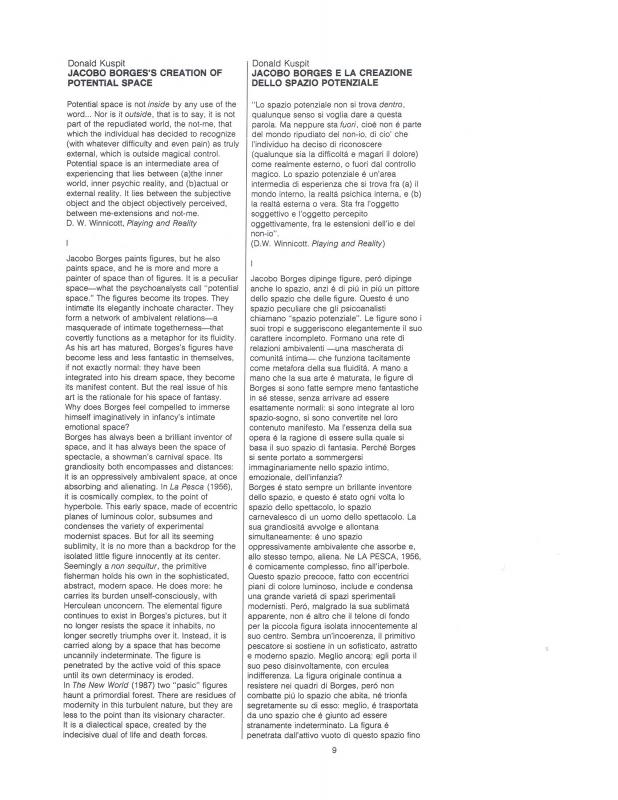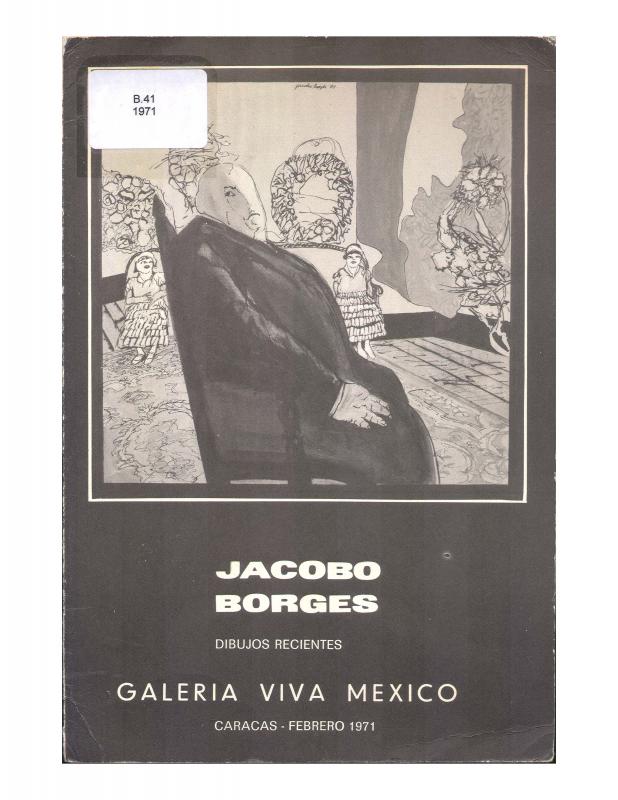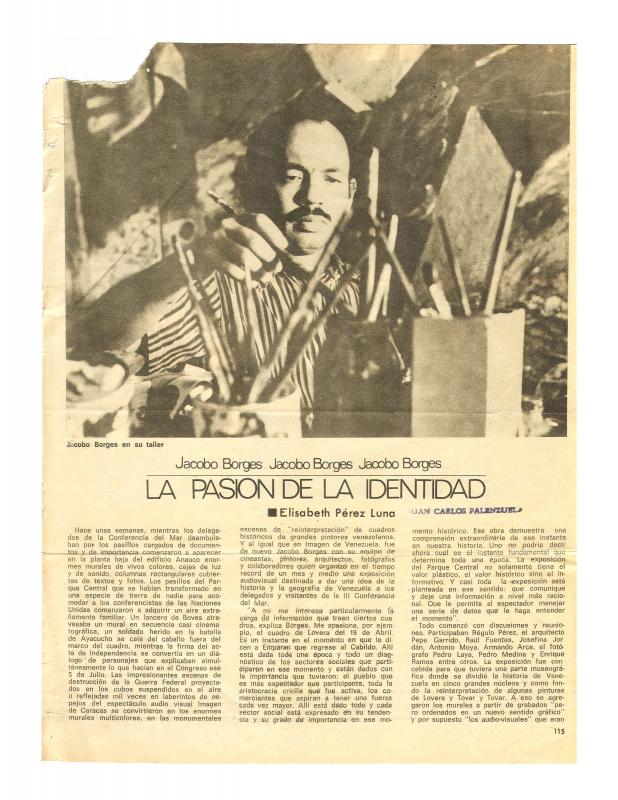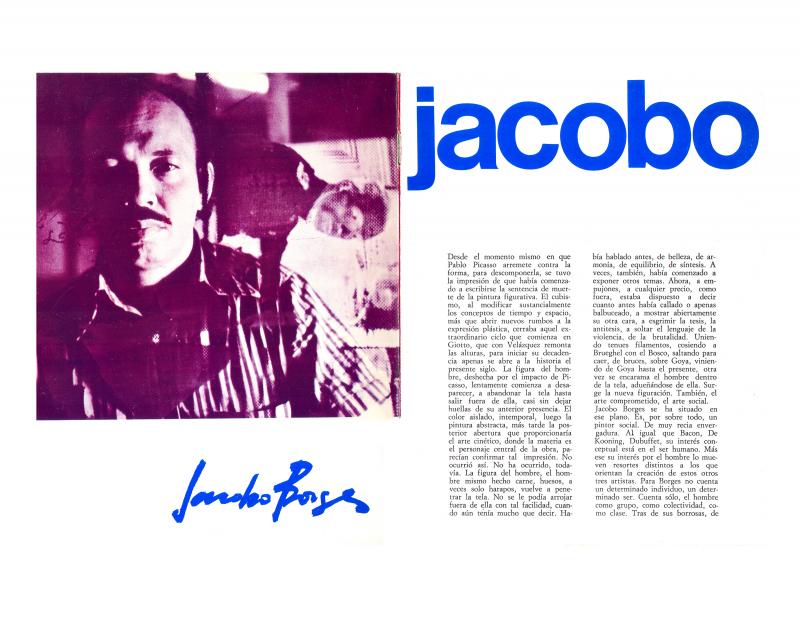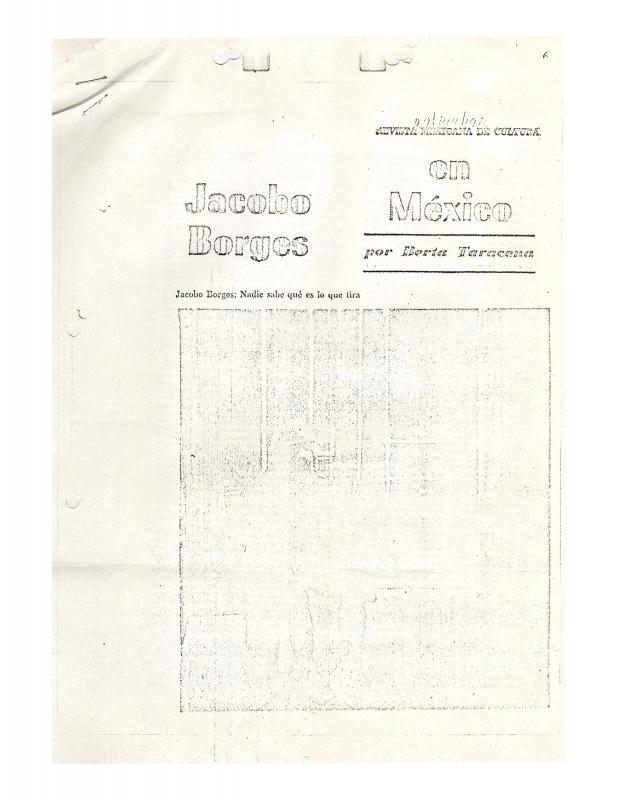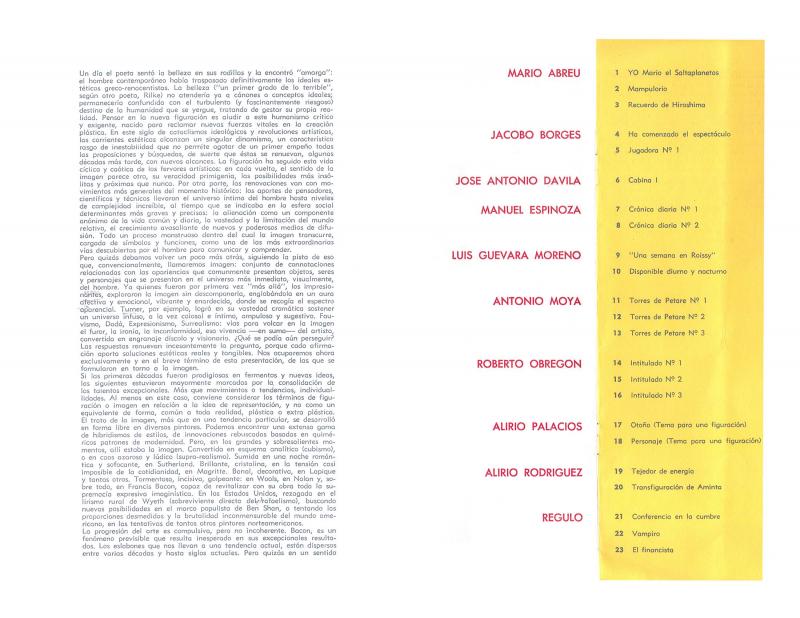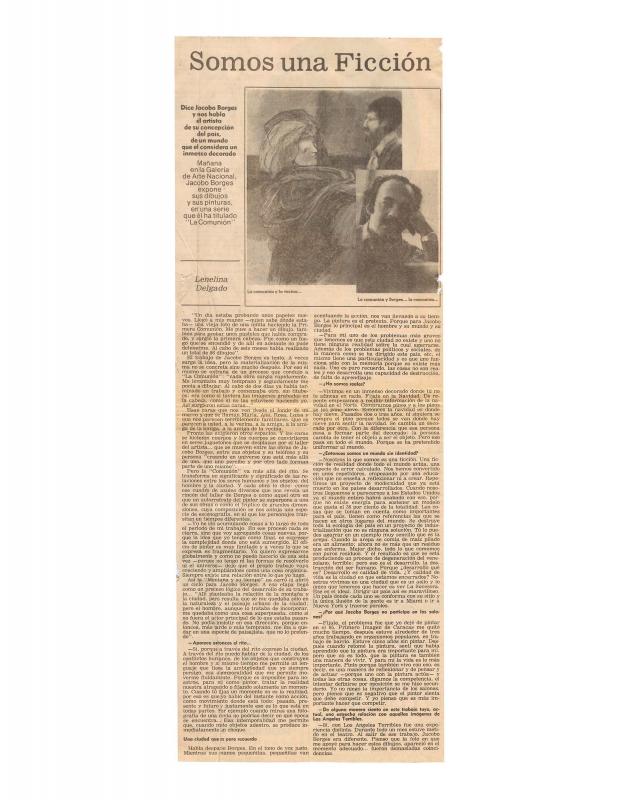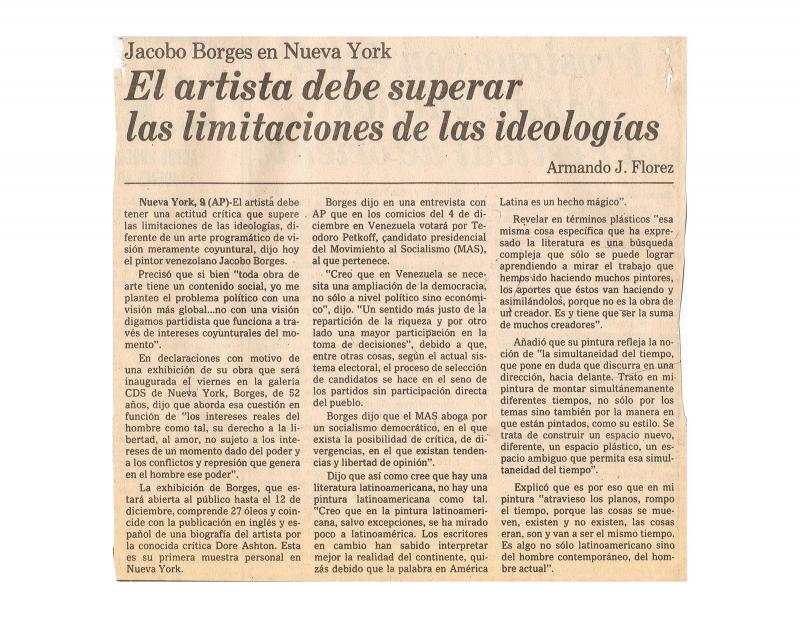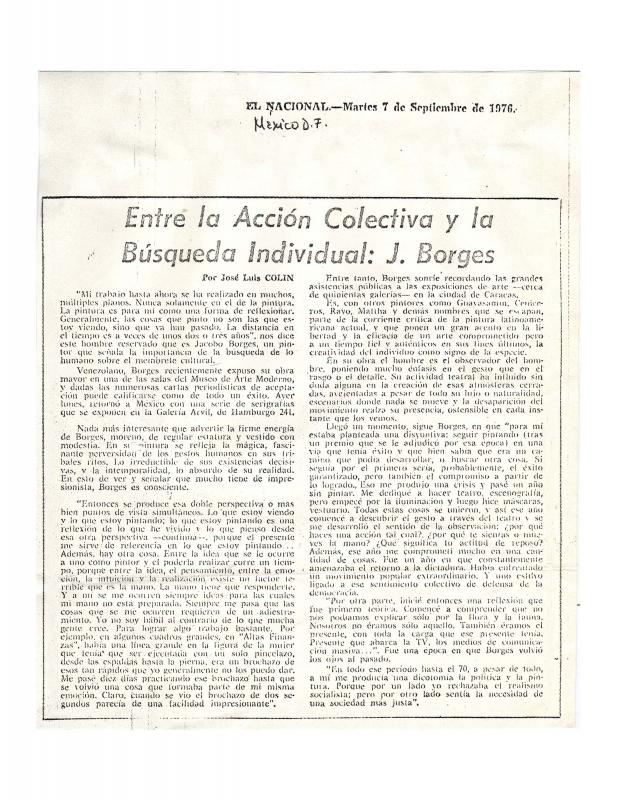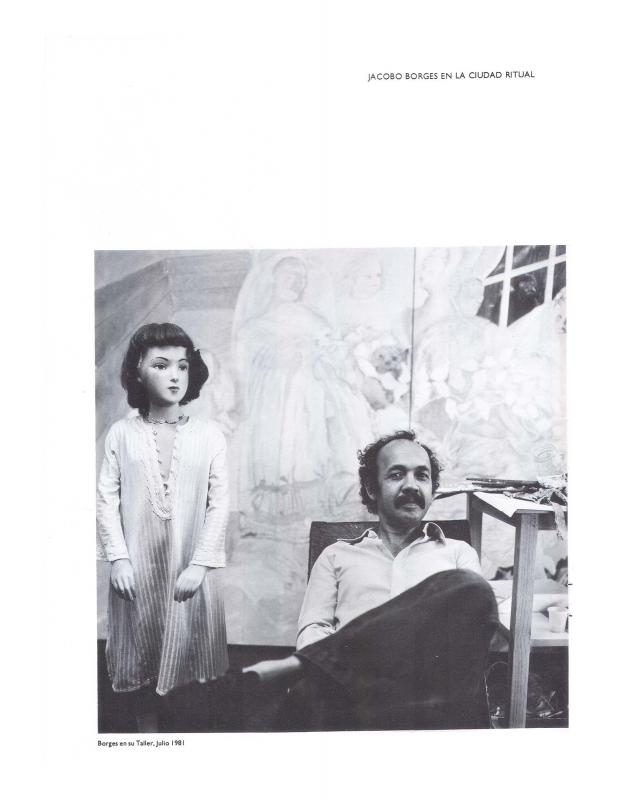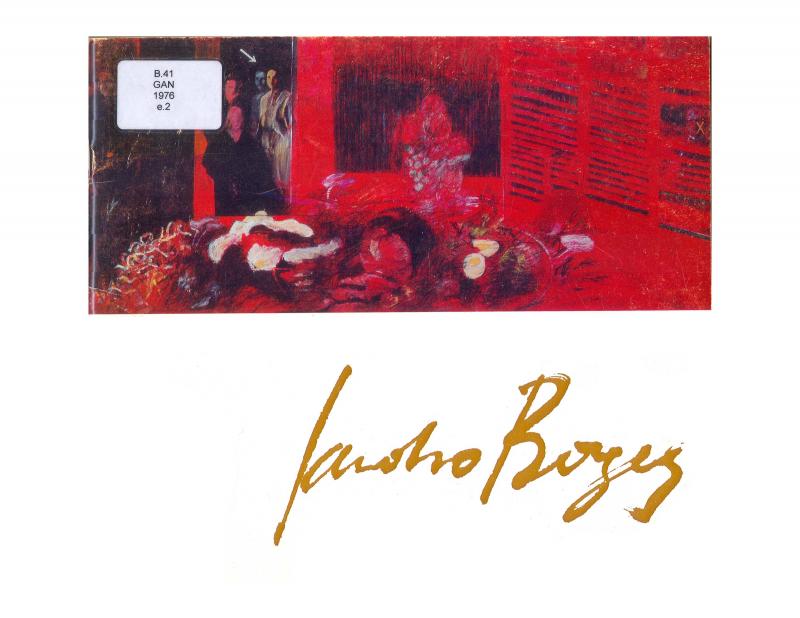In this brief essay, the Venezuelan critic and draftsman Juan Calzadilla (b. 1931) introduces Borges. Las Jugadoras, the exhibition installed in July 1965 at El Techo de la Ballena. Calzadilla discusses the work presented by Jacobo Borges (b. 1931), and refers to his novel treatment of reality, which differs from the social realist approach, in which painterly values gradually dominate the composition despite its energetic ideological, intensified, and powerfully expressive idea as a result of its axiological foundation. This phenomenon connotes New Figuration, the movement that Borges would champion, together with Luis Guevara Moreno and Régulo Pérez. Calzadilla’s description of Las Jugadoras takes a narrative form, thus acknowledging the potent expressionism of gesture and color, two characteristic features of Borges’ painting at that time. The exhibition of his work at El Techo de la Ballena served another purpose as well: it represented a critique of social realism—which the group disdained for its sentimentality that, in their opinion, lacked true artistic value—and of geometrical abstraction which, in their view, was just another formula. For some critics, New Figuration was a middle way between those two styles, and was a dominant force during the 1950s.
El Techo de la Ballena was a group of visual artists and writers from the Venezuelan avant-garde who (from 1961 until 1968) combined a range of different disciplines—visual art, poetry, photography, film, and action art, among others—to create a revolutionary form of art that, in their opinion, challenged and contradicted every traditional socio-cultural value during the decade of greatest political violence that Venezuela had ever experienced. The group saw themselves as the artistic expression of that chaotic period, and viewed guerrilla warfare, intellectual leftist ideas, repression, and cities devastated by the forced and accelerated developmental model of the country’s nascent democracy during the presidency of Rómulo Betancourt (1959–64) as their frame of reference. The visual artists in the group embraced informalism as their aesthetic, to which they added a potent shot of aggressiveness to counter the values of geometric abstraction, traditional landscape painting, and even social realism, and adopted a strategy that was subversive, provocative, irrational, and surrealistic. The group produced numerous publications—including the three issues of the magazine Rayado sobre el Techo—and exhibitions. Members of the group included the Venezuelans Carlos Contramaestre, Juan Calzadilla, Caupolicán Ovalles, Edmundo Aray, Francisco Pérez Perdomo, Salvador Garmendia, Adriano González León, Fernando Irazábal, Daniel González, Gabriel Morera, Gonzalo Castellanos, and Perán Erminy, as well as artists from other countries who were living in Venezuela at the time, such as the Chilean Dámaso Ogaz and the Spaniards J. M. Cruxent, Ángel Luque, and Antonio Moya.
[On the subject of Borges’s work, see in the ICAA digital archive the article by Donald Kuspit “Jacobo Borges’s creation of potential space / Jacobo Borges e la creazione dello spazio potenziale” (doc. no. 1060608); by the critic Perán Erminy “Una exposición de obras de Jacobo Borges” (doc. no. 1060424); the newspaper review by Elizabeth Pérez Luna “Jacobo Borges. La pasión de la identidad” (doc. no. 1063714); the article by the critic Inocente Palacios “Jacobo Borges” (doc. no. 1060361); the essay by the historian Berta Taracena “Jacobo Borges en México” (doc. no. 1063795); the article by the critic Roberto Guevara (untitled) “[Un día el poeta sentó la belleza en sus rodillas…]” (doc. no. 1060477); the interview conducted by Lenelina Delgado entitled “Somos una ficción” (doc. no. 1063831); the one by Armando J. Florez “El artista debe superar las limitaciones de las ideologías. Jacobo Borges en Nueva York” (doc. no. 1065435); and by José Luis Colin “Entre la acción colectiva y la búsqueda individual: Jacobo Borges” (doc. no. 1063769). See also, by María Elena Ramos “Jacobo Borges en la ciudad ritual” (doc. no. 1060525); and by Calzadilla “Presentación” (doc. no. 1060392)].

